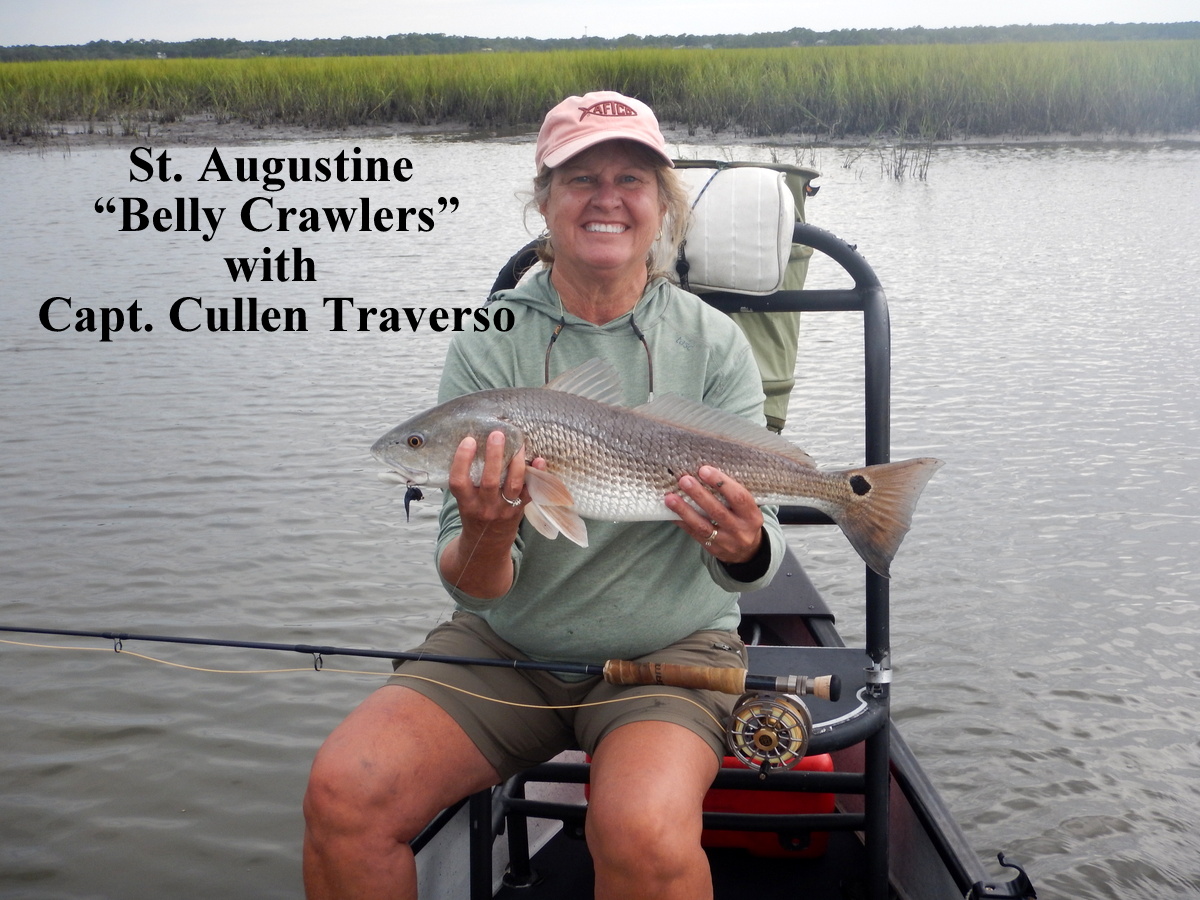On The Fly Freshwater
Article and featured photo by Jimmy Jacobs
December 2020
The Conasauga River in northwest Georgia is unique among the state’s trout streams in a couple of ways. To begin with, it is undoubtedly the Peach State’s most pristine trout water. The river rises in the midst of the 42,000-acre Cohutta Wilderness Area, which in turn is within the 95,000 acres of the state-managed Cohutta Wildlife Management Area.

Photo by Jimmy Jacobs
From the headwaters to the edge of the wilderness area, the Conasauga’s course is unblemished by any man-made structure. Rather, its shores are lined with second growth forest, most of which now is more than a century old. The only remnants of man’s use of the area are trails that follow the old logging railbeds or roads.
The other factor setting the Conasauga apart is the set of regulations for fishing the stream. From November 1 until the last Saturday in March, only artificial lures are allowed for fishing the Conasauga. The rest of the year the state’s general trout regulations apply. These rules are in effect for the main river and all of its tributaries upstream of the Georgia – Tennessee border, with the exception of the Jacks River and its feeder streams.
The Conasauga rises near Betty Gap and then runs to the northwest to the Alaculsy Valley. Along the way is flows amid mountain peaks that reach 4,000 feet in elevation. This truly is the backwoods of North Georgia, populated by white-tailed deer and black bears, along with a host of smaller animals.

On The Fly South’s Polly Dean prospecting for trout on the Conasauga. Photo by Jimmy Jacobs.
The river itself holds a population of wild rainbow and brown trout. The last stockings of the river in what would become the wilderness area in 1974 took place more than five decades ago. Today the Conasauga hosts wild, stream-bred trout. These fish run the gamut from 3- to 4-inch young of the year, up to 12- to 13-inch trout. But, fish up to 16 inches – especially browns – are present as well.

Photo by Jimmy Jacobs
It was this mix of wilderness and wild trout that drew the crew from On The Fly South to hike into the Conasauga for a day of late November angling. Backpacking in for a couple of days of fishing is the best way to experience the river, since only foot and horseback travel is allowed, but a couple of trails are short enough to offer the option of day trips.
Our jump-off point was the parking area for the Hickory Creek Trailhead near the junction of Mill Creek Road (Forest Service 630) and West Cowpens Road (FS 17) on the west side of the wilderness area. The Hickory Creek Trail (Forest Trail 10), runs along an old logging road for an easy 3-mile walk to the water. Along the way you have to ford Rough Creek, a feeder stream that also holds a good population of small wild rainbows. At the river, the trail crosses, then turns up Hickory Creek to climb a ridge and descend into the Jacks River valley.

The Hickory Creek Trailhead. Photo by Polly Dean.
Due to the crisp November weather, we loaded our waders and boots into a backpack for the trek down to the Conasauga. At the crossing of Rough Creek, we changed from hiking gear to wading attire for the last couple of hundred yards of trail to the river.
Though the previous days had been rainy, the river was flowing clear, but a bit high for the fall season. With its undisturbed riparian areas, the Conasauga often runs high, but very rarely gets even stained. On past trips in the spring, the water was running through the trees along the bank, but where you could find room to cast, the trout would take dry flies.
Up near Betty Gap the Conasauga is a small flow, but by the time it reaches the Hickory Creek crossing it is medium- to large-sized for a Peach State mountain stream. Its rocky course is open enough in this area for easy fly casting.
If a day in the late fall or winter turns out to be rather mild, tossing attractor dry flies can be successful here. Like most North Georgia streams, the Conasauga is a freestone flow that is not very fertile. While it has a wide variety of aquatic insects, none are particularly abundant, so true hatches are uncommon.

On milder winter days, dry flies may produce some action. Photo by Jimmy Jacobs
A better way to probe the water in cooler months is drifting nymph patterns through the pools under a strike indicator, or using a dry-dropper rig. Prince Nymphs and Red Copper Johns have been a couple of patterns that have worked here. For some of the bigger pools, you might want to slow strip a weighted Wooly Bugger looking for a bigger trout.
Another trail that reaches the river is the Conasauga River Trail (FT 11) that drops for 1.7 miles down from Betty Gap, with the last quarter mile being quite steep. Up there the river is very small, and more suited for a single angler, rather than a group. The trailhead is on Conasauga River Road (FS 64), just northeast of the road junction on Potato Patch Mountain.
In the midsection of the river the Chestnut Lead and Tearbritches trails both descend into the Conasauga’s valley from the west. Both are steep trails, with the Chestnut Lead running for 1.4 miles and Tearbritches for 3.4 miles. Be aware that climbing out of the valley on Tearbritches is strenuous, with some stretches being straight uphill. The trailheads for both these paths are on Conasauga Lake Road.





